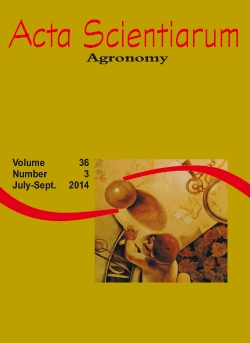<b>Environmental and genetic variation in the post-harvest quality of raspberries in subtropical areas in Brazil
Resumo
Raspberry is an economically important berry crop that contains numerous phenolic compounds with potential health benefits. It is known that the chemistry content is affected by processing factors, but limited information is available on the influence of cultural factors or genotype. To clarify this issue, this work aimed to characterize the following raspberry cultivars Polana, Autumn Bliss, Heritage,Batum, Golden Bliss, hybrid Boysenberry and black raspberry from MantiqueiraMountains (Campos do Jordão city, São Paulo State, Cwa climate, mesothermal with dry winter, commonly named tropical de altitude, according to Köppen classification) and Alto do Rio Grande (Lavras city, Minas Gerais State,Cwb climate, with dry winter and summer temperate), two areas subtropical in Brazil, and quality attributes. The fruits were used for the following analysis: mass, size, number of drupelets, color, total acidity, soluble solids, total soluble solids / titratable acidity (TSS / TA), moisture and ash. The results revealed strong influence of growing site on fruit quality as well as the existence of variation among cultivars. Fruits produced in Mantiqueira Mountains had larger and higher TSS / TA. On the other hand, the growing raspberries in Alto do Rio Grande provided greater color tone, increased acidity, and low ratio of total soluble solids and total acidity.
Downloads
DECLARAÇÃO DE ORIGINALIDADE E DIREITOS AUTORAIS
Declaro que o presente artigo é original, não tendo sido submetido à publicação em qualquer outro periódico nacional ou internacional, quer seja em parte ou em sua totalidade.
Os direitos autorais pertencem exclusivamente aos autores. Os direitos de licenciamento utilizados pelo periódico é a licença Creative Commons Attribution 4.0 (CC BY 4.0): são permitidos o compartilhamento (cópia e distribuição do material em qualqer meio ou formato) e adaptação (remix, transformação e criação de material a partir do conteúdo assim licenciado para quaisquer fins, inclusive comerciais.
Recomenda-se a leitura desse link para maiores informações sobre o tema: fornecimento de créditos e referências de forma correta, entre outros detalhes cruciais para uso adequado do material licenciado.




















































